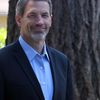The failures of top-down reforms are evident in many urban district--but so is the promise of organic, from the edges, outside-in innovation. Over the last three years, the explosion of mobile learning apps and the drop in device prices has resulted in hundreds of thousands of classrooms that blend online and face-to-face learning in American schools. Teachers are using new tools to engage students and extend learning.
"The real power of what we have going on in Rhode Island is that it's all grassroots and driven from the educator side of things," said Shawn Rubin, "We don't yet have a strong startup community here, but our educators love to collaborate around new ideas and test and tinker in any corner of the state that they can."
Rubin is the Director of Blended Learning at the
where he manages technology integration, consulting and professional development programs. He has helped spur surprising energy across Rhode Island. The Institute's work in Providence has spilled over into a statewide initiative to scale blended learning to all 57 districts and Local Education Agencies (LEAs) in RhodeIsland. The project is called
and is being supported by
, a non-profit organization dedicated to accelerating the implementation of high quality blended learning in schools across America. Through Fuse RI, the Highlander Institute will spend the next three years making Rhode Island the first fully blended learning state.
Rubin's initiative is an example of leveraging teacher leadership to bring next generation learning to scale. Three more examples include:
- CityBridge Foundationand NewSchools Venture Fund launched the Education Innovation Fellowship, a professional development opportunity for 20 teacher-leaders in Washington DC. They meet monthly for a year, surveying all the sector knowledge about next gen tools and models and visit innovative schools. Two cohorts of Fellows have energized education in the city.
Next gen learning.
describes next generation learning as kids as autonomous, self-directed learners who are thinking deeply, collaborating to make societal contributions, and using digital technologies to do powerful, meaningful, and authentic work. Suggesting a move away from cultures of fear and compliance, McLeod outlines the three big shifts our schools need to make: from low to high-level thinking, from analog to digital, and from teacher to student-directed.
National new school design competitions like
(NGLC) and local innovation incubators like
in New Orleans illustrate the potential of using technology-enhanced teaching to rethink school models.
New learning environments require design thinking, what Sandy Speicher from IDEO calls a
.
Blended classrooms can provide a boost to a group of students, but blended schools create a new world of opportunity for how a team of teachers interactswith hundreds of students and how students experience learning. Blended schools redesign roles and use technology to
of excellent teachers and the teams they lead.
Where to start?
At the
Summit in West Virginia (
) last week, a superintendent asked, "Where do we start?" My new book,
, outlines next steps for cities:
- Hold community conversations. Discuss next gen opportunities with parents and faculty. Find out what they're excited and concerned about.
The path to next generation learning for every student is bottom up, top down and sideways in. Leaders should share a vision, put it on a timetable, and
build a supported path that allows everyone to be part of the vision.
